
Studebaker National Museum
South Bend, Indiana, USA
In late September, 2007, after the "Era of Exner Event", I visited the Studebaker Museum.

In late September, 2007, after the "Era of Exner Event", I visited the Studebaker Museum.
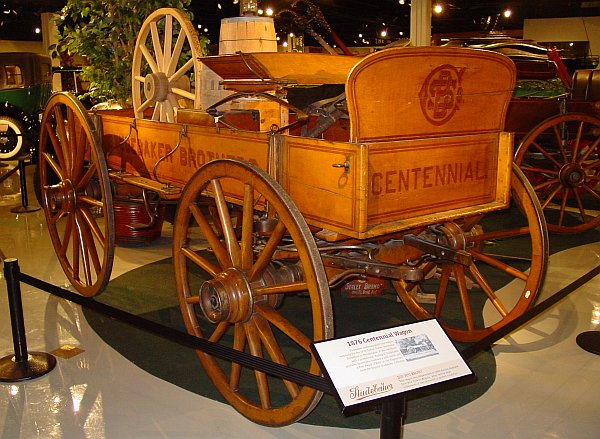 |
1876
Studebaker Centennial Wagon This wagon was specially built for an exhibition in
Philadelphia, celebrating the Centennial of the United States of America.
|
Since 2005, the Studebaker Museum is placed in a new
building,
the style looks similar to the old Studebaker factory
buildings.
| 1904
Studebaker Model C This is the oldest gasoline powered Studebaker.
|
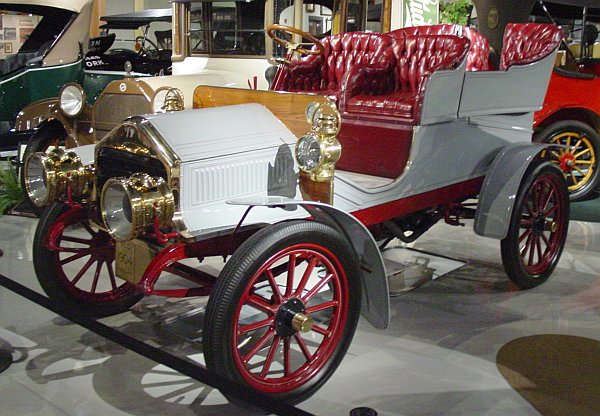 |
The first floor of the Studebaker Museum shows the cars from around 1900 to the late 1930's.
 |
1912
Flanders 20 From 1909 to 1912, Studebaker sold more than 30,000
Flanders automobiles.
|
Founded in 1852, the Studebaker Company built carriages,
but around 1900, they started the production of electric vehicles.
Later, they switched to gasoline powered cars.
Studebaker had a lot of dealers throughout the United
States, but no know-how to build automobiles, so they started cooperations
with several car-companies, like Garford, or E-M-F / Flanders.
Specially the E-M-F cars brought some trouble, because
they weren't well engineered,
some people thought EMF stands for "Every Morning
- Fix it!"
| 1926
Studebaker Big Six Duplex Phaeton The Duplex was the top-of-the-line, back in 1926. The car had a solid top, but curtains as side-windows, like an open tourer. |
 |
After all these problems, Studebaker started to produce
real Studebakers,
most likely also because the business with carriages
was dying...
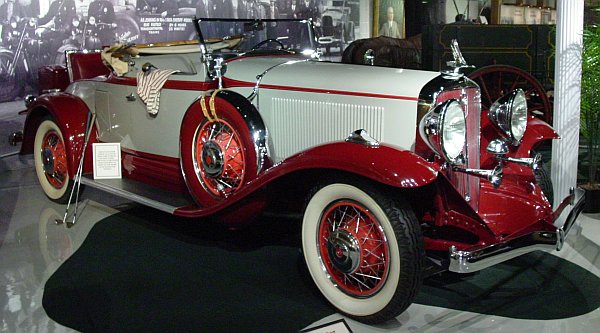 |
1931
Studebaker President Four Season Roadster In 1931, a lot of people still had the idea that an automobile was a "toy", with this car, named "Four Season Roadster", Studebaker wanted to make a clear statement, that the car was able to be driven in every season. |
In 1920, Studebaker stopped building carriages, and
moved the automobile production to South Bend.
The 1920's saw Studebaker expanding more, and more,
the mid-priced models were quite successful.
| 1932
Studebaker President Convertible Coupe The President series was restyled for 1932. |
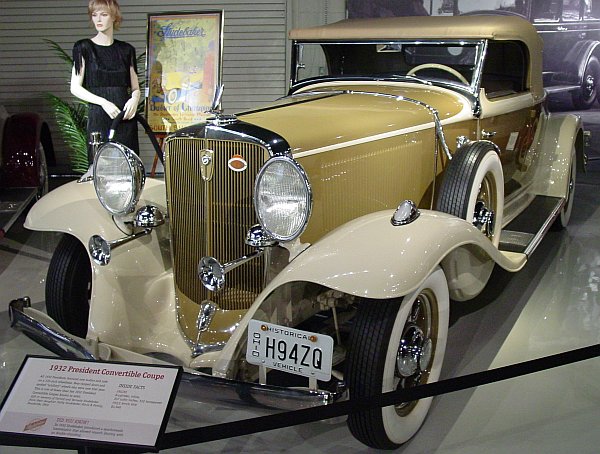 |
Erskine, and Rockne were car-makes owned by the Studebaker
Corporation, created to expand in cheaper markets,
on the other hand, Studebaker acquired Pierce-Arrow,
to step in the luxury-car-market.
Well, the Great Depression brought some financial
problems, but Studebaker survived...
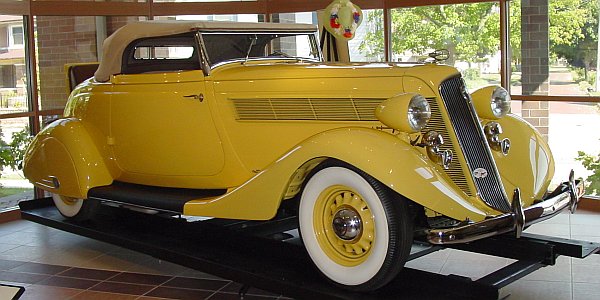 |
1935
Studebaker Commander Roadster An impressive convertible, in yellow...
|
From 1936 to 1955, Raymond Loewy was responsible for
the Studebaker design,
but Virgil M. Exner was chief-stylist for the company
from 1938 to 1949.

photo taken at the "Era
of Exner Event"
The 1949 Champion came from his drawing-board.
While the "Big Three" started post-war production
with redesigned pre-war cars,
Studebaker brought a complete new designed car-series.
| 1950
Studebaker Commander Starlight Coupe The famous bullet-nose design.
|
 |
The 1950's started with the famous bullet-nose models.
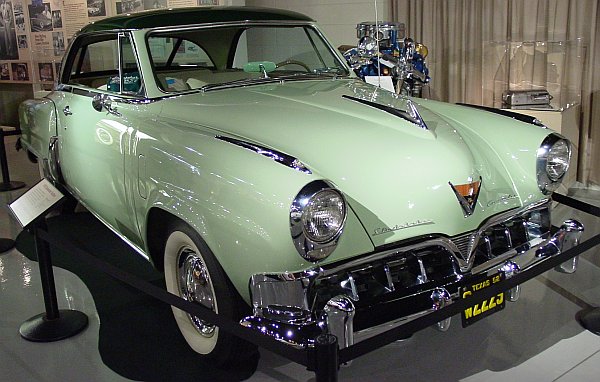 |
1952
Studebaker Commander Starliner In 1952, Studebaker celebrated its centennial!
|
Later, Studebaker started the even more famous coupe-series,
still under the leadership of Raymond Loewy, but designed
by Bob Bourke.
| 1953
Studebaker Champion Starliner Hardtop The design came from the bureau of Raymond Loewy, and
is one of the most beautiful/famous Studebakers.
|
 |
The mid-50's brought again some financial trouble.
Packard, and Studebaker tried to solve this problem
together, the Studebaker-Packard company was born,
but it didn't help.
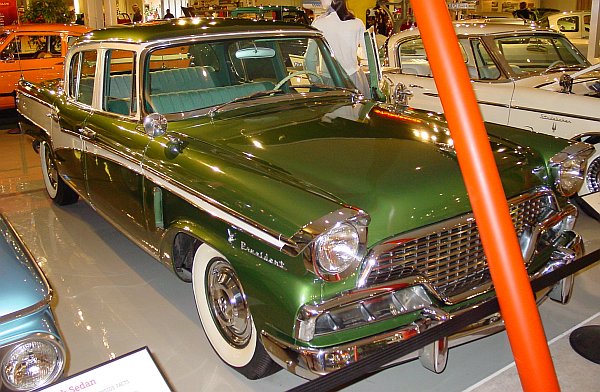 |
1956
Studebaker President Classic For 1956, Studebaker decided to go back to a more classic styling for the sedan-series. |
| 1961
Studebaker Hawk The end of the tail-fin-era. |
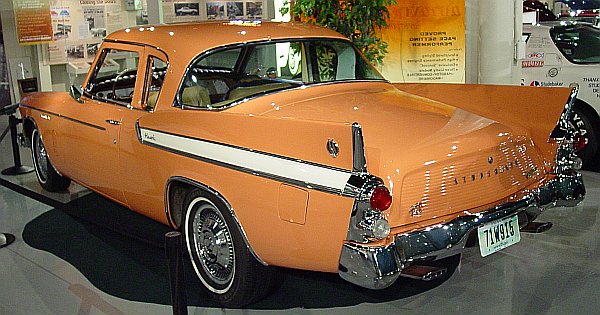 |
The Hawk series was beautiful, and successful, but
not successful enough.
Loewy designed the Avanti, but it was to late to save
Studebaker, the production ended in 1963 at South Bend,
and in 1966, the last Studebaker was built in Canada.
The rights for the Avanti were sold, and the car survived
in small production numbers for a very long time,
even four door sedans, and convertibles were built...
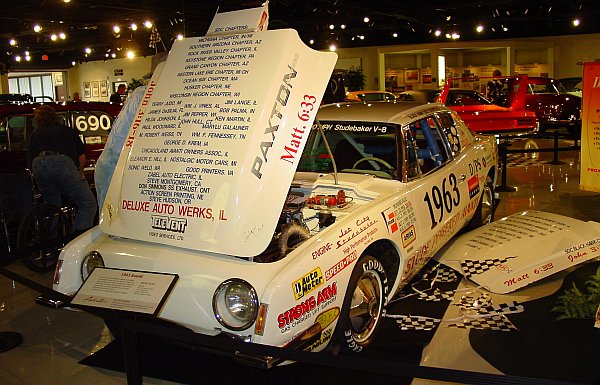 |
1963
Studebaker Avanti The Avanti should start a new era of Studebaker automobiles,
but finally it was the last Studebaker.
|
The post-war cars are located on the second floor of
the museum, and shows a lot of nice, and interesting Studebakers.
There is also some space for non-Studebaker-cars,
when I was there, it was a special exhibition of muscle-cars.
| 1934
Bendix The Bendix Corporation, a supplier
for the car industry, started to build this prototype in 1932.
|
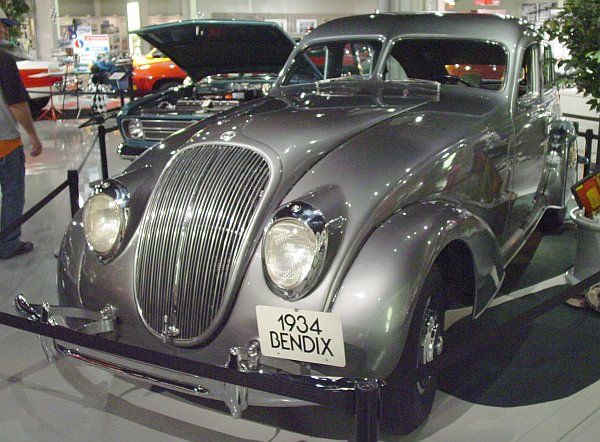 |
The National Studebaker Museum is a MUST for every
car-enthusiast,
whenever you will have the chance to see this fine
collection, take it!
On first floor, there is also a nice museum shop, where
you can spend some money for memorabilia,
like books, modelcars, postcards, or many other Studebaker
related products.
(Next to all the books, and postcards, my favorites
were the cinnamon candies!)
 |
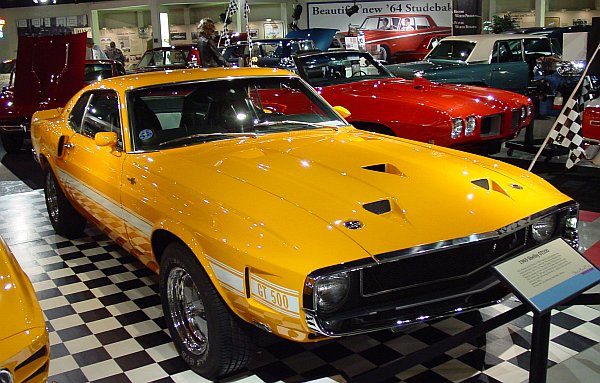
1969 Shelby GT500 |
 |
Literature:
Collectible Automobile, June 2012 (8 pages, 19 photos)
Here you will find the official homepage of the museum:
go to:
"Era
of Exner Event, 2007"